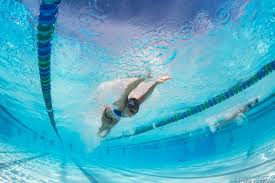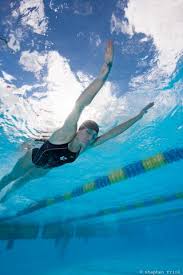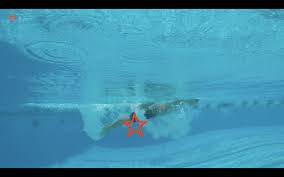Welcome back, to our last and final segment on the Butterfly stroke. This week, we will discuss the last portion of the stroke—the Butterfly Pull. In this post, we will dissect some of the common errors seen within the pulling pattern, what the proper pulling technique is, and allow YOU to analyze a swimmer’s stroke to further train your coaching eye!
In case you missed any parts of this series, here are the links:
Otherwise, let’s get started…
Compared to other pulling patterns, the Butterfly Pull is not that complicated. With both arms moving simultaneously, it requires less body awareness to complete this pull. But with that being said, if you are pulling incorrectly—it will be reflected on both sides of your body.
Keep in mind: As we go through this post, we will discuss each phase of the Butterfly Pull—there are four phases total. In each phase, we will talk about common errors associated with that phase. Then at the end of this post, we will have a video analysis for you to watch and compare your notes taken from your coaching eye versus mine.
Let’s do this…
Phase 1: Entry
Just like in Freestyle–when your hands are about to enter the water in Fly, you want the middle finger entering first—with the palms facing down. Your hands should enter right above their respective shoulder joint—if not, slightly wider (or outside) the joint. This setup will put you in position to “catch” water immediately.

Phase 1–Common Errors:
Some Flyers enter the water with their thumbs. This type of entry will delay the time it takes for your hand to get into the “catch” position. Along with, internally rotating your shoulder joints—which adds extra and unneeded stress to your body.

Also, this entry may also cause you to pull too “wide” throughout your entire pull—hindering your ability to generate as much propulsion as possible.
Phase 2: The Catch
After the hands have entered in the water, the swimmer bends the elbow early (mimicking the early vertical forearm position in Freestyle) as they begin to pull backwards. This bend in the elbows puts the swimmer into their “catch” position, where they are able to fully engage their muscles to catch water.
@traindaly Butterfly is tough but with the right technique and training it can be efficient and powerful. A common mistake is coming up to high, increasing drag, and wasting energy that could be spent moving forward. Causes are many but one in particularly in your line of pull. Like all the strokes, you want to push water back to move your body forward. Wherever you push water, it pushes back. Swimmers lacking a good high elbow catch compensate by pushing water down, driving their body up. Drills and exercises that improve your mobility to get into an early vertical forearm, and the straight to pull water with your arms out long, get help you improve body position and propulsion. #butterflystroke #swimming #swimtechnique #swimdrills #drylandforswimmers
♬ Drive Forever – Slowed – T3NZU
Phase 2–Common Errors:
A common mistake made during the backwards pulling phase is that some swimmers have a tendency to sweep outwards (away from their body) before they start pulling back. This error is easy to spot (especially with video analysis) because the swimmer’s body actually drops towards the bottom of the pool at the beginning of the pull.
Another common error (and this one happens more with age-groupers) made during the backwards pulling phase is that some age-groupers pull down towards the bottom FIRST to help give them leverage to get their upper body out of the water—for the breath. This error can be seen (normally through a coaches’ eye), as a pause in the swimmer’s pull happens at the time of the breath.
Phase 3: The Pull
After a swimmer begins to pull backwards with bent elbows, think of the Butterfly Pulling pattern as an hour glass. Your hands start wide (or on top of your shoulders). The hands come in–under the bellybutton, and they finish wide, out back–past your hips! Your elbows come to their maximum point of flexion when they’re under the belly button. Also, your forearms and palms are perpendicular to your body through the pull.
Phase 3—Common Errors:
One of the common errors in this phase is the swimmer not getting the hands under the belly button. You’ll see a lot of younger swimmers keep the hands outside their body the entire time during their pull. This is a physics learning moment.
Remember: The further you are away from your center of mass–the more torque you create.
This same rule affects the Butterfly Pull: The further your arms are away from your body—the weaker your pull will be.
Phase 4: The Finish
The Butterfly Pull is completed when the hands push passed the hips and the elbows are fully extend (completely firing through the length of your tricep muscles). Also, you lead with your elbows coming out of the water into the recovery.

Phase 4—Common Errors:
A common error during this phase is a swimmer stopping their pull before their hips. Instead of pushing past their hips and fully extending their arms (with help of their triceps), you’ll see many younger and weaker swimmers stopping their pull early and starting their recovery sooner. By doing this, you lose about 30% of your pulling phase and only get a 70% of your work output.
Thanks for tuning in!
Until Next Week,
Abbie Fish

One Response